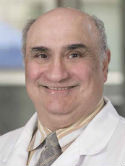Comparison of the weight of conventionally heat-processed hollow and solid obturators and 3D printed hollow obturators Journal Article
| Authors: | Spatz, H. I.; Schmitz, J. T.; Singh, A.; Golden, M.; Riedel, E.; Randazzo, J. D.; Huryn, J. M. |
| Article Title: | Comparison of the weight of conventionally heat-processed hollow and solid obturators and 3D printed hollow obturators |
| Abstract: | Statement of problem. The weight of larger obturators places increased stress on the supportive teeth and bearing tissue and allows gravity to act as a dislodging factor affecting the stability and retention of the prosthesis. However, whether conventionally processed and 3-dimensionally (3D) printed hollow obturators have similar reduced weights compared with solid obturators is unclear. Purpose. The purpose of this in vitro study was to evaluate the weight difference between conventionally heat-processed complete denture obturators with and without hollowing and 3D printed obturators with a hollow bulb. Material and methods. Obturators were fabricated as conventionally heat-processed solid obturators, conventionally heat-processed with a hollow obturator bulb, and 3D printed with a hollow obturator bulb. Nine obturator prostheses were fabricated for each type of Aramany Class I, Class II, and Class III defect. The weights of each of the 27 obturator prostheses were measured, and a statistical analysis was performed with exact versions of the Kruskal-Wallis test or Wilcoxon Rank Sum test (alpha=.05). Results. Conventionally heat-processed solid obturators were significantly heavier than the conventionally heat-processed hollow (P<.001) or the 3D printed hollow obturators (P<.001). No significant difference (P=.222) was found between the conventionally heat-processed hollow and 3D printed hollow obturators. The decrease in weight was proportional to the size of the defect with the Aramany Class I defect having the largest differences in weight between the different fabrication methods, followed by Class II, and then Class III with a much smaller defect. Conclusions. Additive manufacturing could be a suitable alternative to conventional techniques for the fabrication of a closed hollow obturator because of the comparable weights. |
| Keywords: | fabrication |
| Journal Title: | Journal of Prosthetic Dentistry |
| Volume: | 134 |
| Issue: | 2 |
| ISSN: | 0022-3913 |
| Publisher: | Mosby Elsevier |
| Date Published: | 2025-08-01 |
| Start Page: | 492 |
| End Page: | 500 |
| Language: | English |
| ACCESSION: | WOS:001553586900036 |
| DOI: | 10.1016/j.prosdent.2023.09.030 |
| PROVIDER: | wos |
| PUBMED: | 37914607 |
| Notes: | The MSK Cancer Center Support Grant (P30 CA008748) is acknowledged in the PDF -- Source: Wos |
Altmetric
Citation Impact
BMJ Impact Analytics
Related MSK Work








